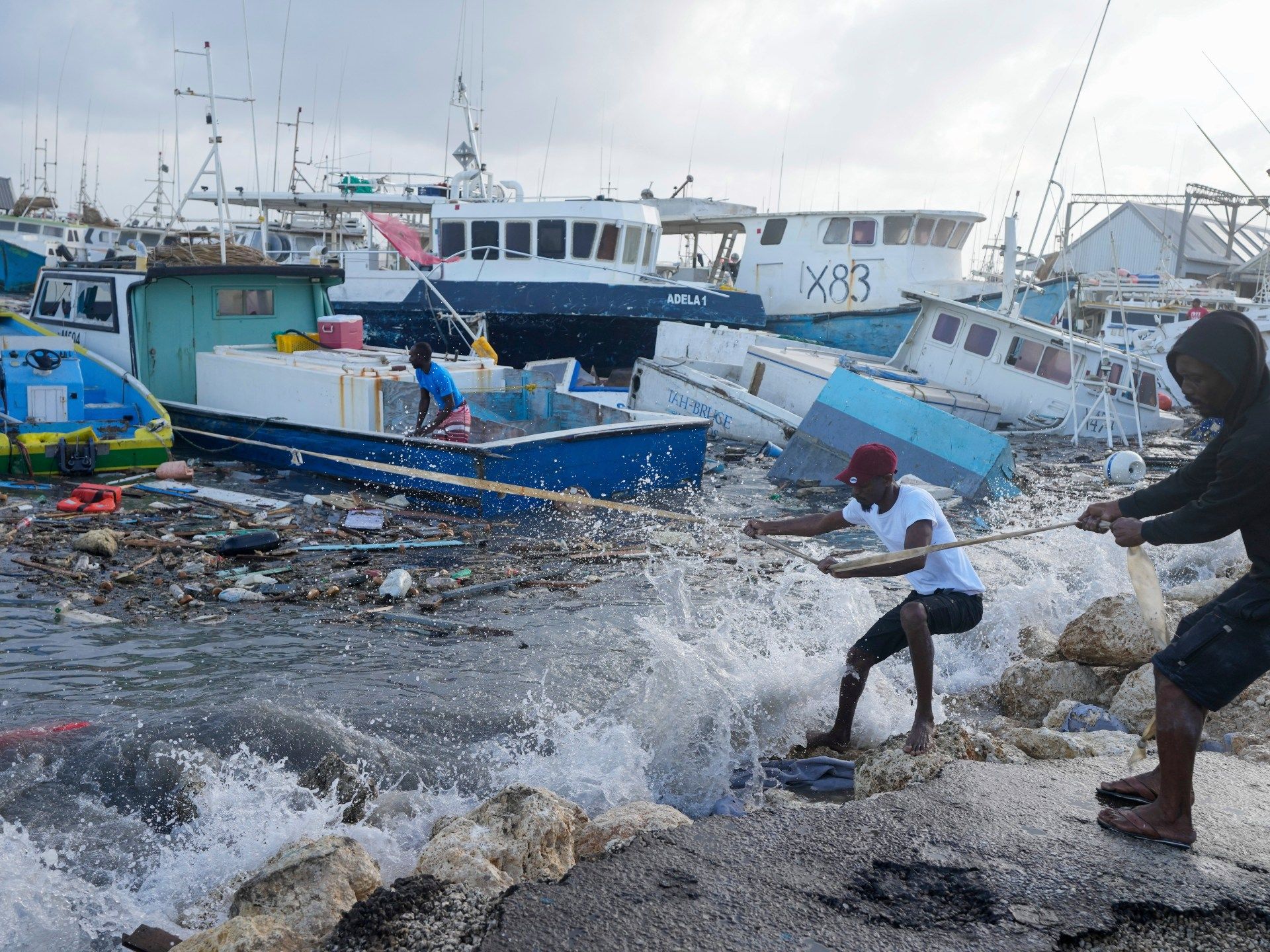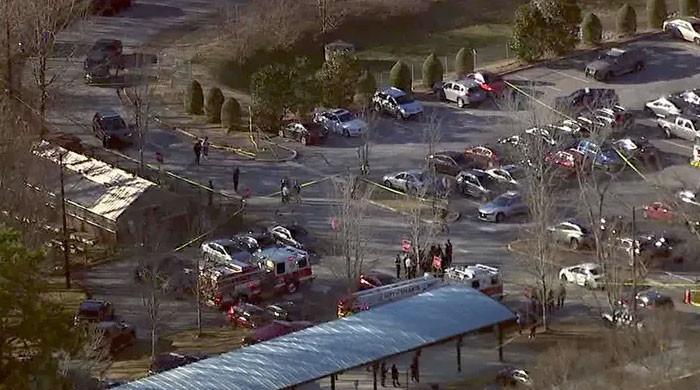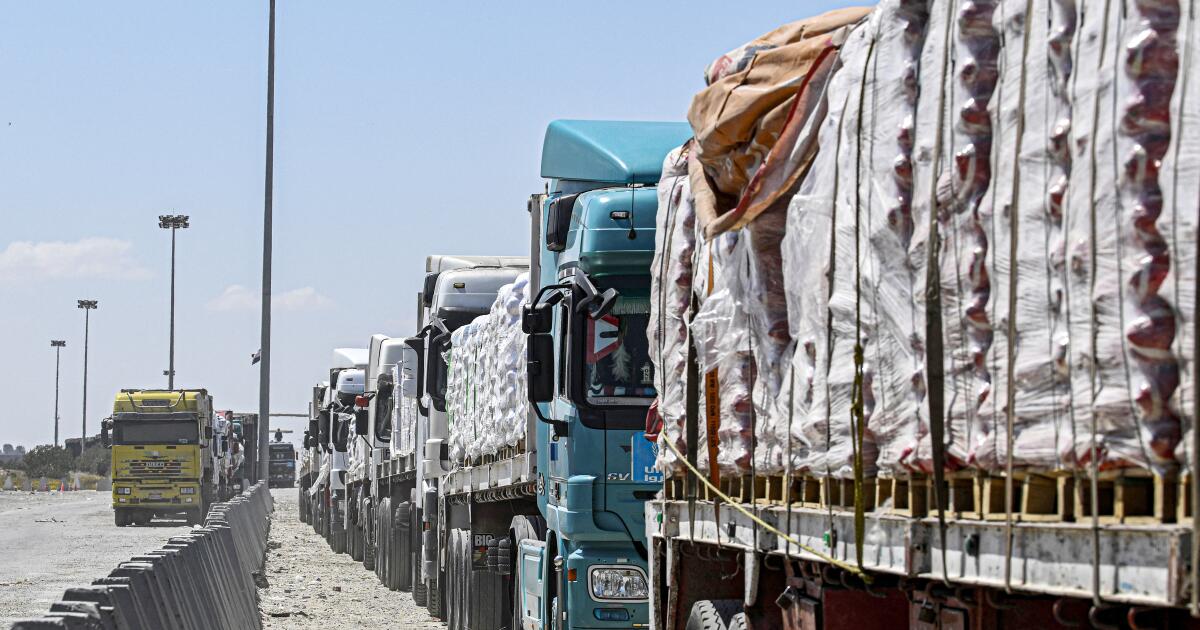Beryl, the earliest Category 4 storm ever reported, is heading toward Jamaica after hitting the island of Carriacou in Grenada.
Hurricane Beryl has strengthened into a “potentially catastrophic” Category 5 storm, the U.S. National Hurricane Center (NHC) said, as it headed toward Jamaica after downing power lines, damaging homes and flooding streets on other islands in the southeastern Caribbean.
Beryl, the earliest Category 4 storm ever reported, made landfall early Monday on Carriacou Island in Grenada.
“Beryl is now a potentially catastrophic Category 5 hurricane,” the NHS said in a bulletin at 11 p.m. (0300 GMT). “Fluctuations in strength are likely… but Beryl is expected to remain near major hurricane intensity” as it moves through the Caribbean.
Carriacou took a direct hit early in the day from the storm's “extremely dangerous eyewall,” with sustained winds of more than 240 kilometers per hour (150 mph), the NHC said.
Nearby islands including Grenada and St. Vincent and the Grenadines also experienced “catastrophic winds and life-threatening storm surge,” the hurricane center said.
“Within half an hour, Carriacou was flattened,” Grenada's Prime Minister Dickon Mitchell told a news conference. He added that one person had died but that authorities had not yet been able to assess the situation on the islands of Carriacou and Petite Martinique, where communications were largely cut off.
“We hope there are no more deaths or injuries,” he said. “But keep in mind the challenge we have in Carriacou and Petite Martinique.” Mitchell added that the government will send personnel on Tuesday morning to assess the situation on the islands.
Streets from St Lucia to Grenada were littered with shoes, trees, downed power lines and other debris. Some banana trees were snapped in half by the force of the wind.
“I’m just heartbroken right now,” said Vichelle Clark King as she surveyed her sand- and water-filled tent in Bridgetown, the capital of Barbados.
The storm is expected to pass near Jamaica on Wednesday, the Miami-based hurricane center said.
The Jamaican government issued a hurricane warning for the country, while tropical storm warnings were in effect for parts of the southern coasts of the Dominican Republic and Haiti.
Effect of climate change
The last strong hurricane to hit the southeastern Caribbean was Hurricane Ivan 20 years ago, which killed dozens of people in Grenada.
Beryl became the first hurricane of the 2024 Atlantic season on Saturday and quickly strengthened to Category 4 status.
Experts say a storm this powerful forming so early in the Atlantic hurricane season, which runs from early June to late November, is extremely rare and that climate change likely contributed to its rapid formation.
Global warming has helped push temperatures in the North Atlantic to record highs, causing more surface water to evaporate, which in turn provides additional fuel for more intense hurricanes with higher wind speeds.
“Climate change is leading to more intense hurricanes,” said Christopher Rozoff, an atmospheric scientist at the National Center for Atmospheric Research in Colorado.
New Jersey meteorologist Andra Garner said Beryl went from a Category 1 storm to a Category 4 storm in less than 10 hours.
Their research has shown that as water temperatures have increased over the past five decades, storms have become more than twice as likely to transform from weak storms into major hurricanes in less than 24 hours.
In May, the U.S. National Oceanic and Atmospheric Administration predicted above-normal hurricane activity in the Atlantic this year, also noting abnormally high ocean temperatures.
At Chillin' restaurant in Kingston, waiter Welton Anderson said he felt calm despite the approaching hurricane.
“Jamaicans wait until the last minute. The night before or in the morning, panic sets in. It’s because we’re used to this,” he said.
On other eastern Caribbean islands, residents had boarded up windows, stocked up on food and filled their cars with fuel as the storm approached.
Authorities in Mexico have also begun preparing for Beryl’s arrival later this week, with the federal government issuing a statement urging authorities and the public to exercise “extreme caution.”












